Promising technology has great potential as welfare assessment tool
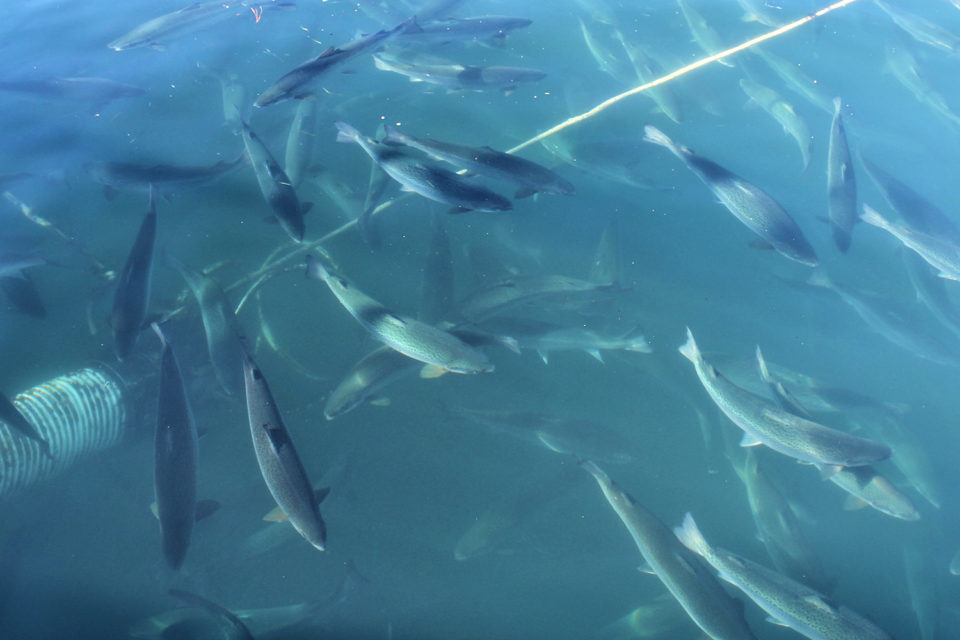
Fish welfare in Atlantic salmon (Salmo salar) aquaculture is gaining increased attention from both consumers and producers. Good welfare in aquaculture means that the fish remains healthy, show normal behaviors and have high growth rates. This is obviously advantageous for the producer and also allows the consumer to enjoy a product generated in an ethical and responsible way.
Most methods to evaluate if cultured fish are thriving either assess welfare indirectly through environmental monitoring, at the group level in rather crude manners, or only provide a single time point measurements of random individuals. But recent advancements and commercialization in bio-logging technologies provide new possibilities to monitor the behavior and welfare of aquacultured fish.
A bio-logger is either inserted into the abdominal cavity via a simple surgical procedure, or fixated externally to measure behavioral, environmental or physiological parameters in free swimming fish over long periods of time, for instance heart rate (HR), acceleration, orientation, temperature and depth. HR is particularly interesting from a welfare perspective, as it reflects the level of activity and stress of the fish, which then could be directly related to the prevailing environmental conditions in the sea cage, disease outbreaks, or to major operational procedures such as crowding, transport and delousing.
Recently, commercially available HR bio-loggers have successfully been used to study the behavior and stress response of farmed rainbow trout and farmed Atlantic cod. In these studies it was confirmed that such bio-loggers can provide accurate HR measurements, and that stressful events were associated with notable increases in HR. Moreover, rainbow trout, another salmonid species, displayed a strong diurnal pattern in HR, where disturbance to this pattern could serve as an indicator of poor welfare, while recovery of the diurnal rhythm ideally should be allowed before a subsequent stressor is experienced.
This article – adapted and summarized from the original (Hvas, M. et al. 2020. Heart rate bio-loggers as welfare indicators in Atlantic salmon (Salmo salar) aquaculture. Aquaculture Vol 529, 15 December 2020, 735630.) – investigated the long-term feasibility of a commercially available HR bio-logger implanted in the abdominal cavity in farmed Atlantic salmon with regards to survival, growth and welfare.
Study setup
Atlantic salmon post-smolts were kept in the indoor fish tank laboratories at Matre Research Station, Matredal, Institute of Marine Research, Norway. Two holding tanks (2-m diameter, water volume of 2.4 cubic meters) were used, each containing ~25 fish which provided an adequate stocking density of approximately 12 to 15 kg per cubic meter over the course of the experiment. An open flow of filtered, UVC treated and aerated seawater into the fish tanks was supplied from the local fjord at 90 meters depth. The water flow was set to ensure high oxygen saturation levels at all times, prevent waste products from accumulating, and to keep the ambient temperature stable at 9 degrees-C. The fish were fed to satiation with a commercial diet for one hour each day using automated feeding devices, and were kept on a 12 hours light/dark cycle from 08:00 to 20:00.
Twelve fish (six from each tank) were tagged with commercial HRT bio-loggers, and held in groups within a highly controlled tank laboratory environment for up to 13 weeks, to allow for a proper evaluation of the prospects of such HR bio-loggers for long-term studies in sea cage environments. At the beginning of the experiment we performed a 30-minute crowding stress trial that simulated a major farming operation to assess the acute stress response, subsequent time to recover normal HR, and potential stress related mortality.
For detailed information on the experimental design; animal husbandry; implantation of bio-logger; measurements and protocols; and data analyses, refer to the original publication.
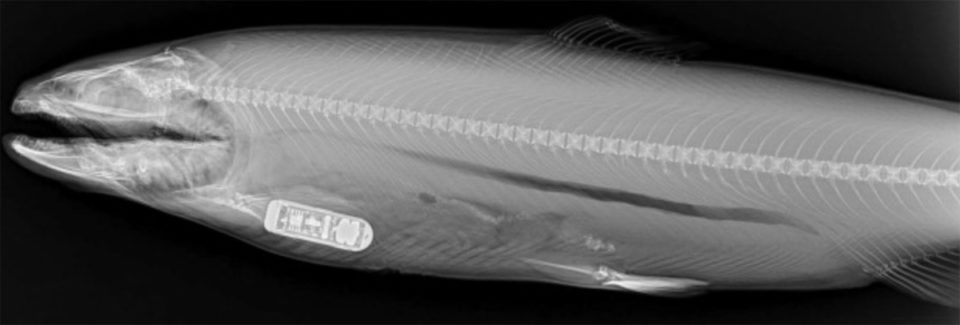
Results and discussion
We were able to successfully maintain farmed Atlantic salmon tagged with HR bio-loggers for up to 13 weeks in a controlled fish tank laboratory environment. At the end of the experiment, untagged fish had significantly higher body weight, fork length and condition factor than tagged fish, while all tagged fish still had increased in size since the start of the experiment.
Apart from one individual that died in the second week of the experiment owing to wounds and infections in the tail region, the remaining 11 tagged fish showed consistent and similar HR patterns in response to the day/night cycles, feeding time midday, and to the crowding stress trials in the final weeks of the study. In addition, X-ray photography at the end of the experimental period confirmed that the bio-logger in all fish remained adequately situated in the abdominal cavity close to the pericardium.
However, implantation of the bio-logger may have had some negative consequences for the fish with regards to growth since untagged counterparts were significantly larger at the end of the experiment. This is perhaps not surprising as the bio-logger is relatively large and situated in the anterior part of the fish where it could interfere with the ability for food intake by pressing on the digestive tract and stomach region. The tagged fish must still have been eating some, as they did increase in weight during the experiment. Whether feed intake was consistently reduced throughout the experimental period or gradually recovered towards the latter part was not directly assessed here, but we optimistically expect that appetite would improve over time following the tagging procedure. Hopefully, this will be confirmed in future field studies where even longer tagging periods ideally should be used.
Moreover, it is well documented in farmed Atlantic salmon that they possess great capabilities for compensatory growth following long periods of restricted feeding or feed withdrawal. Hence, if appetite gradually will recover following implantation of a bio-logger, tagged fish may catch up in size with untagged individuals, provided the study period is sufficiently long.
Although the tagging procedure is brief and fairly simple, it is associated with several stressors such as netting, air exposure, anesthesia and the subsequent surgical implantation where a deep incision on the ventral midline is necessary. Knowledge of the time required to recover adequately, including sufficient wound healing, is therefore crucial when establishing a new tagging method. Generally, salmonids are highly sensitive to acute stressors and it typically takes many hours to recover from the associated acid-base, osmotic and endocrine disturbances.
Our results showed that resting HR of Atlantic salmon, as measured at night and early morning, continued to decrease until the third week of the experiment whereafter it remained stable for the remaining weeks. This suggests that the impact of the tagging procedure perhaps takes substantially longer to completely recover from than thought previously, or that Atlantic salmon need more time to recover.
When comparing measurements of resting HR between studies, apart from species differences, one must consider that both water temperature and fish size will affect the results, where smaller fish at higher temperatures can be expected to have a higher resting HR owing to metabolic scaling and metabolic acceleration, respectively.
In our study, the resting HR of Atlantic salmon measured at 02:00 and 06:00 between the third and tenth week was ~25 beats per minute and was obtained at a constant temperature of 9 degrees-C on fish weighing ~1.2 kg. Other researchers have also reported resting HR of Atlantic salmon weighing 1.5 to 3 kg at 10 degrees-C to be 25 beats per minute. The resting HR of Atlantic salmon in our study is generally similar to previous findings in salmonids, and in those cases where it was higher, this may be explained either by having used smaller fish, higher test temperatures, or using a briefer recovery period which may overestimate the true resting HR.
In Atlantic salmon aquaculture, major farming operations such as thermal and mechanical delousing, other health treatments, and transportations necessitate crowding of the fish where they are confined at high densities. This unfamiliar situation imposes substantial acute stress by causing a state of panic and hyperactivity that may result in physiological exhaustion as well as substantial collision damage. Increased activity has previously been documented via implanted acoustical tags. Furthermore, anecdotes from Atlantic salmon farmers suggest that some mortality is the norm during any crowding operation where the fish otherwise appeared healthy beforehand, while certain delousing methods specifically are associated with increased mortality risks.
A likely explanation to why the fish in the present study demonstrated impressive recovery capabilities following a severe stressor is that they were in excellent health owing to having been maintained indoor, with filtered and UV treated water supply minimizing parasite, bacteria and virus infections, in stable and calm conditions for several months. This contrasts the situation of Atlantic salmon exposed to an ambient sea cage environment where they encounter fluctuating environmental conditions and multiple pathogens, where the cumulative effect of these could decrease the available scope in HR, as seen for rainbow trout subjected to a series of stressful events. Consequently, observations made in environmentally controlled indoor fish tank facilities may not necessarily be a realistic reflection of the life of a farmed Atlantic salmon in a commercial sea cage environment.
Perspectives
Our study obtained basic data sets from HR bio-loggers to evaluate them as a suitable method to document fish welfare in Atlantic salmon aquaculture in ways otherwise not possible with other available tools. While it is a concern that implantation of the bio-logger impair growth for quite some time, the benefits of obtaining high quality physiological measurements of free swimming individuals over long periods of time in their ambient environment makes up for this concern, in our opinion. However, a thorough evaluation of the representativeness of untagged conspecifics in terms of behavior, growth and survival will be even more important in future field studies where fish will be subject to multiple stressors in a much less controlled environment.
Several questions remain unanswered with regards to experienced stress levels and welfare status of growing Atlantic salmon in sea cages when subjected to the interactive effects of major farming operations, various pathogens and specific environmental conditions (e.g. water temperature, dissolved oxygen, current velocity, waves, algae blooms, jellyfish), as well as coping capabilities in new farm concepts. Of particular importance for management purposes is the time required for physiological recovery in fish subjected to certain challenges, especially when considering the added burden of prevailing stressors.
This will allow to better identify mortality risks and to make nuanced guidelines for how often it is feasibly to subject fish to major farming operations. For instance, at elevated temperatures and moderate hypoxia it may be particularly risky to perform a delousing operation owing to a reduced scope for activity. Emerging HR-bio-loggers such as those employed in the present studies could help us answer these questions so that more robust recommendations for fish management can be developed.
Now that you've reached the end of the article ...
… please consider supporting GSA’s mission to advance responsible seafood practices through education, advocacy and third-party assurances. The Advocate aims to document the evolution of responsible seafood practices and share the expansive knowledge of our vast network of contributors.
By becoming a Global Seafood Alliance member, you’re ensuring that all of the pre-competitive work we do through member benefits, resources and events can continue. Individual membership costs just $50 a year.
Not a GSA member? Join us.
Authors
-
Malthe Hvas, Ph.D.
Animal Welfare Research Group
Institute of Marine Research
Matre, Norway[111,110,46,114,109,105,64,115,97,118,104,46,101,104,116,108,97,109]
-
Ole Folkedal, Ph.D.
Animal Welfare Research Group
Institute of Marine Research
Matre, Norway -
Frode Oppedal, Ph.D.
Animal Welfare Research Group
Institute of Marine Research
Matre, Norway
Related Posts
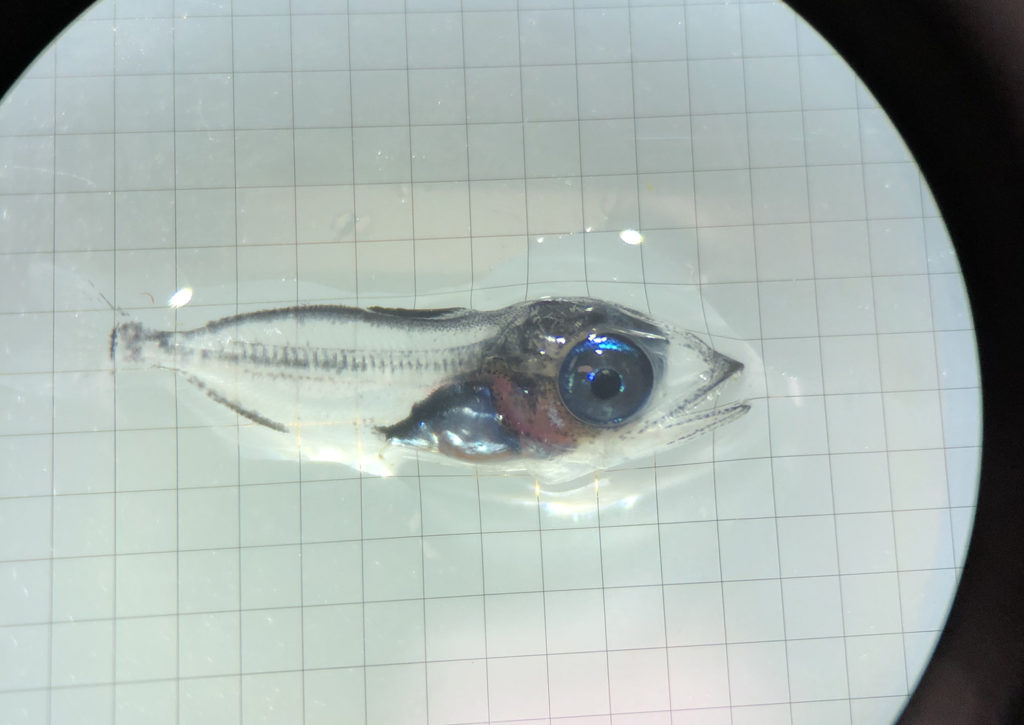
Innovation & Investment
‘Not convinced it can’t be done’: A look inside California’s new bluefin tuna hatchery
San Diego-based bluefin tuna hatchery and feed company Ichthus Unlimited aims to make tuna ranching a more sustainable and reliable option.
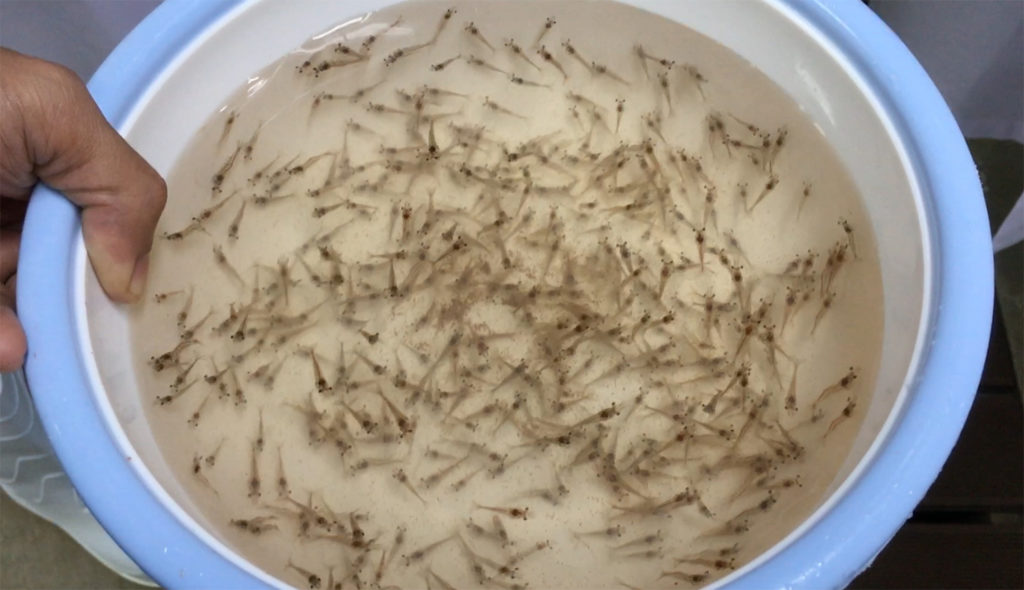
Health & Welfare
Challenging Pacific white postlarvae with AHPND
Study results indicate that P. vannamei challenged with AHPND in biofloc had higher survival rates than shrimp challenged in clear water.
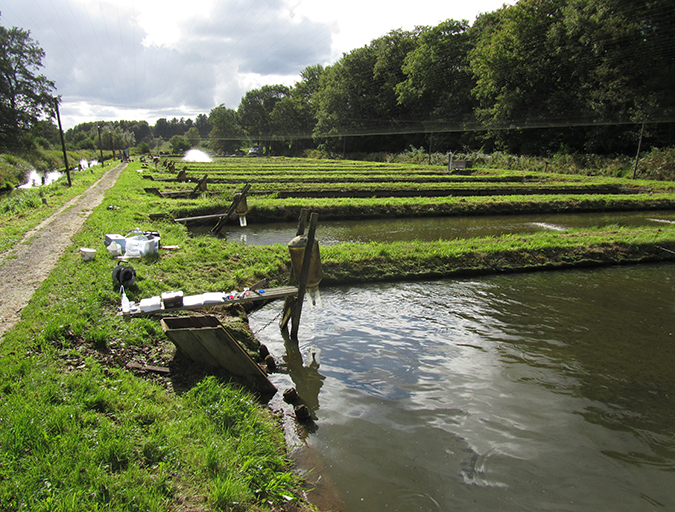
Health & Welfare
Linking water treatment practices and fish welfare
Quantification of fish behavior is complex and depends on the experimental setup and biomarkers applied. A simple method was tested to quantify locomotor behavior to evaluate the effects of simulated water treatment scenarios using peracetic acid.
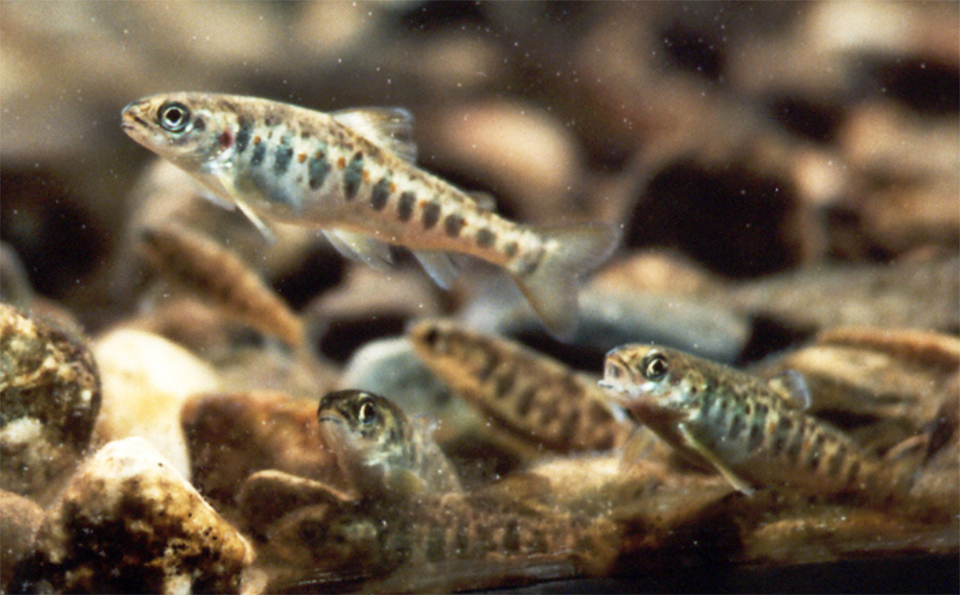
Health & Welfare
Effect of juvenile Atlantic salmon diets with different levels of PUFAs
Study investigates blood and muscle changes in young Atlantic salmon when fed diets containing different amounts of polyunsaturated fatty acids, or PUFAs.


